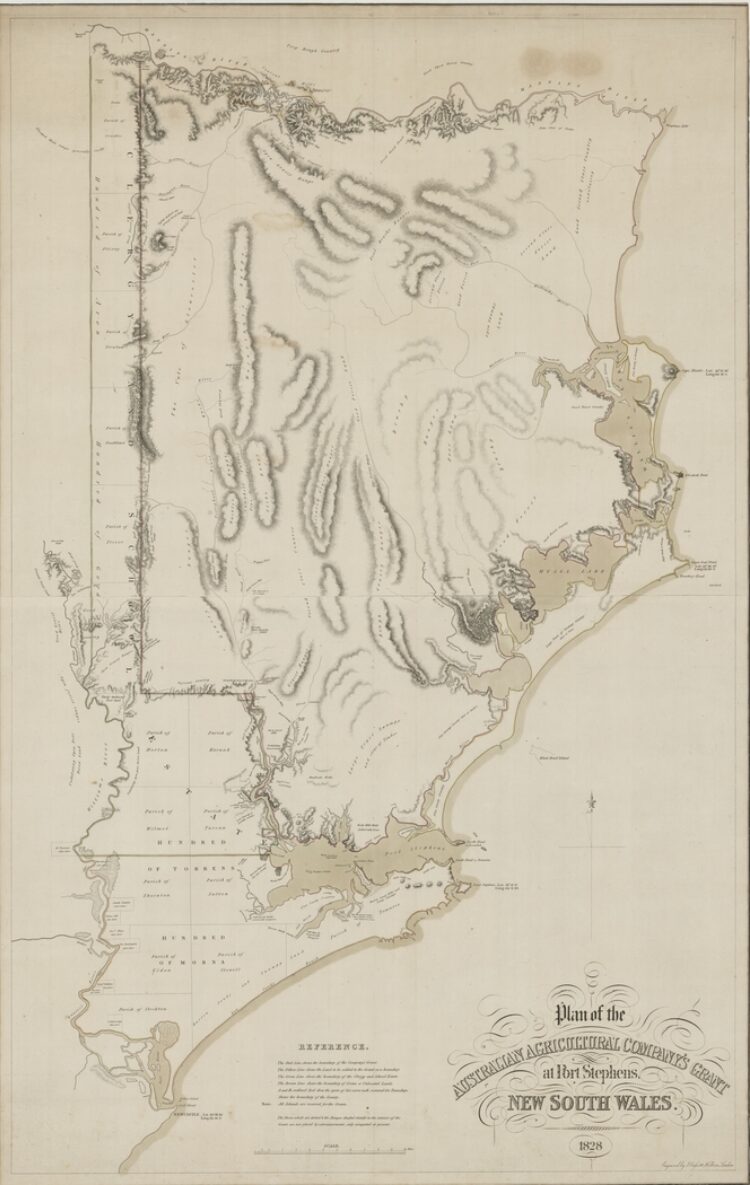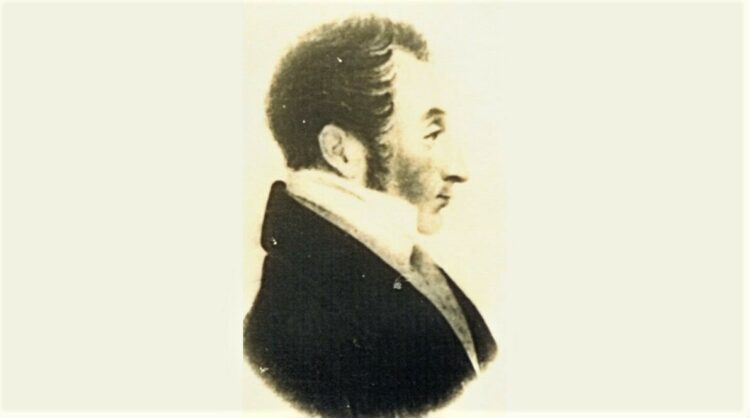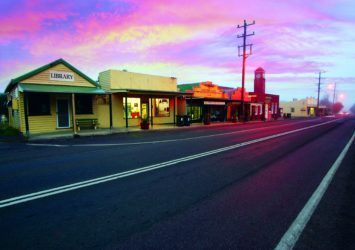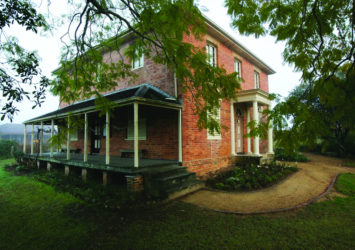Explorers on horseback, huge flocks of merino sheep, droves of cattle, convicts on the run, mail coaches and free settlers in wooden drays laden with the promise of new beginnings.
Hungry for our history? Learn more about the first Europeans in the Barrington Coast from AACo.
The hinterland roads of the Barrington Coast follow the paths of the Worimi and Biripi peoples, across ridges and through valleys with winding rivers. These paths were used by the first Europeans to visit here as they sought the best lands for the sheep of the Australian Agricultural Company (AACo).
These tracks became roads for explorers on horseback, huge flocks of merino sheep, droves of cattle, convicts on the run, mail coaches and free settlers in wooden drays laden with the promise of new beginnings.
The Barrington Coast is where the Australian merino wool industry took its first important but faltering steps.
About AACo
Did you know that the Barrington Coast is where the Australian merino wool industry took its first important but faltering steps? And it all begins in 1824 with a British company created by an Act of Parliament and a Royal Charter: the Australian Agricultural Company (AACo).

This was part of the British government’s plans to drive development of the New South Wales colony including the encouragement of emigration.
AACo had been granted 1 million acres of land for raising 1 million pounds capital, as long as it was outside the established settled areas of the Port Jackson colony. This made AACo virtually a separate colony within the colony of New South Wales, and it centred on 500,000 acres of land from the northern shores of Port Stephens to the southern banks of the Manning River. It was called the Port Stephens Estate and all of this land is now part of the Barrington Coast.
In the mid-1800s, all the hinterland roads led to the town of Stroud, the headquarters of AACo and Australia’s first ‘company’ town. Stroud is the historic centre of the Port Stephens Estate, established in November 1826 by AACo’s first chief agent, Robert Dawson.
Today AACo is Australia’s largest integrated cattle and beef producer, and is the oldest continuously operating company in Australia. Stroud shed its ‘company town’ title in 1864 and AACo’s current headquarters are in Brisbane. The company feedlots and farms comprise 6.4 million hectares of land in Queensland and the Northern Territory, which is roughly 1% of Australia’s land mass.
Stroud is born
In February 1826 Dawson arrived at Port Stephens with two ships, the York and Brothers. He described this waterway as “very capacious and beautiful, there is water enough to admit ships of the largest tonnage, with as fine views of wood and water as can be imagined: the scenery is quite Italian.” His company’s entourage included officers and mechanics, with their wives and families plus 720 French and Anglo merino sheep, 8 horned cattle and 7 horses. He selected some land on the northern shore to create Carrington as AACo’s first settlement.
In November 1826 Dawson went exploring the estate lands, looking for better sheep country than was to be found around the infant settlement after hearing reports of good land to be found around the Manning. With Dawson were 5 local aboriginal men, 3 convict servants, 5 pack-horses, 4 hunting dogs and provisions for 3 weeks.
He was enormously impressed by the country his party traversed – the grassy flats along the Karuah River, the “fine sheep hills” around Stroud, the open country of the Vale of Gloucester “like a gentleman’s park”, and the many beautiful waterways that he encountered, including the Gloucester River and Barrington River. Read more about Robert Dawson’s exploration here [link to come].
In November 1826 Dawson decided on a site for the inland town and he chose the valley where two water courses converged (Lamans Creek and Mill Creek). He named the site Stroud as it reminded him of the Cotswold countryside in England, and most of the wool to be grown was intended for the mills in Stroud Gloucestershire in England. In his journal he described it as "beautiful and picturesque, consisting of low undulating hills...I thought at the time I had never beheld so sweet a spot. The soil is exceedingly rich and the country is watered by two small rivers which form a junction in the vale, and afterwards discharge into the navigable Karuah River”. And so Stroud New South Wales was born.
The village of Booral, 8kms south of Stroud, grew when that riverside land was chosen for farming, while sheep stations were formed in the valleys which stretched 45kms northwards to the beautiful vale of Gloucester. By December 1828, there were 17,459 sheep on the company estate between Port Stephens and Stroud.

Historical buildings of Stroud
Many buildings were constructed or improved in Stroud during the 1830-40s: slab school house (1831); the Store (1831); renovations to the superintendent's house Stroud House (1832); a cottage for superintendent of the flocks (1832); slaughterhouse (1832); Booral House (1831 completed in 1833); mill house (1833); St Johns Anglican church (1833); the Mill (1834); the Woolshed at Telegherry (1835); the Rectory (1836); Booral wharf (1837) and Quambi school house.
Most of the officers, mechanics, blacksmiths, wheelwrights, carpenters, joiners and convict labour force were based in Stroud by 1836. Stroud became the ACCo's main storage location and eight underground silos were constructed at Silo Hill in 1841 to provide pest-free storage for the AACo's grain.
The first courthouse in Stroud was built in the 1840s. The courthouse was replaced in 1877 and court proceedings were held in this building until January 1977. The former courthouse is now a historical museum. Stroud also retains other convict-built buildings, now privately owned, including Orchard Cottage, Melrose, the Storekeepers Cottage and two company cottages originally built for AACo employees.
Under Robert Dawson’s superintendency the settlement did not prosper as the Colonial Committee had hoped. Dawson was dismissed and Sir Edward Parry was appointed the new Company Commissioner, who arrived at Carrington with Lady Parry on 9 January 1830. Parry found the estate in much need of improvement. He began a period of activity in building, clearing, and road construction. Parry realised that two thirds of the Port Stephens Estate land was unsuitable for sheep grazing.
The AACo's move to Tamworth
In August 1833 after extensive negotiation, Parry arranged to exchange 600,000 acres of land at Port Stephens for land in the Liverpool Ranges and Peel Valley (240,000 acres and 360,000 acres). The company established its stations at Warrah and Goonoo Goonoo which yielded good returns for the company. Six thousand sheep were moved from the Stroud region to the Peel Valley grant near present-day Tamworth. This move proved a masterstroke for the fortunes of AACo and the Australian wool industry finally found its heartland after its troubled start in the Port Stephens Estate.
In 1854 the road from the Port Stephens Estate to the Peel Estate was improved. A steep and winding portion of the Nowendoc road from Dungowan near Tamworth up onto the New England plateau is still known as the Port Stephens Cutting. Also in 1854, a twice monthly steamer service from Booral to Sydney was begun and the company’s store at Stroud became a retail outlet.
See more Stroud historical details here.
Read more from Robert Dawson’s book here [link to come]
Manning Valley history
Approaching this valley via the hilltop village of Krambach you'll descend from the ridges into a lush rural landscape. Here you’ll quickly understand why this region was one of the first to be opened up to settlers.
In 1829 the Manning Valley was the northern boundary of the Nineteen Counties, the declared limits of the colony of New South Wales. Settlers were permitted to take up land only within these counties due to the ‘dangers in the wilderness’. From 1831 the granting of free land ceased and the only land that was available for sale was within the Nineteen Counties. One of these original 19 counties was Gloucester County which still exists today and makes up almost the entire Barrington Coast.
In another link to the Australian Agricultural Company (AACo), the river was named in honour of William Manning by Robert Dawson in 1826. Dawson was AACo’s first chief agent in Australia and Manning was the Deputy Governor of AACo in London. Manning was also a member of the UK Parliament 1796-1830 and Governor of the Bank of England 1812-1814.
Both Wingham and Tinonee were founded as government settlements in 1844. Tinonee became home to a busy port at a deep part of the Manning River and later a vehicle punt for the state highway. Wingham sat at the highest navigable part of the Manning River, where the Gloucester Road forded the river at shallow rapids.
The fertile lands watered by the Manning River drew settlers to Wingham from 1841 whilst Taree was laid out as a private town in 1854. Although Taree became the centre for government administration in 1909, Wingham still has many fine buildings from the mid to late 18th century. When the North Coast railway line came through the valley in 1913 from Gloucester and Wingham, it ended initially at Taree. Even before the rest of the line was completed it became apparent that it was safer to send goods by rail to Newcastle and Sydney rather than hazarding the bar at the outlet to the Manning River at Harrington where many ships had been lost. The 1940 opening of Taree’s Martin Bridge across the Manning River boosted Taree’s importance and turned Tinonee back to a quiet river haven.
Information here is courtesy of the Historical Societies of the region: Stroud, Wingham, Tinonee.

